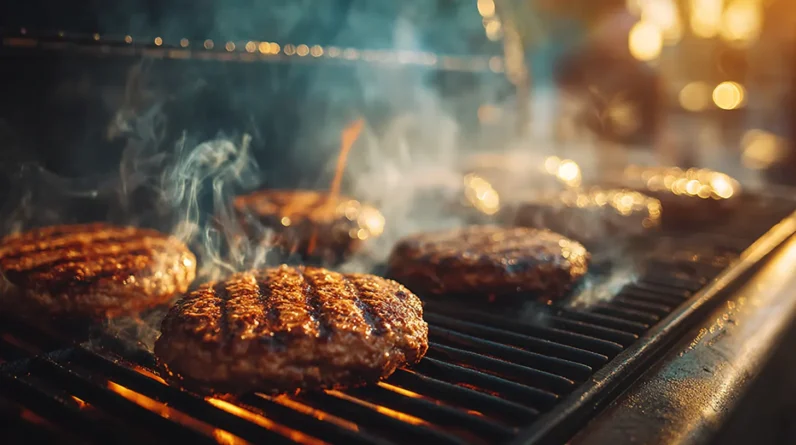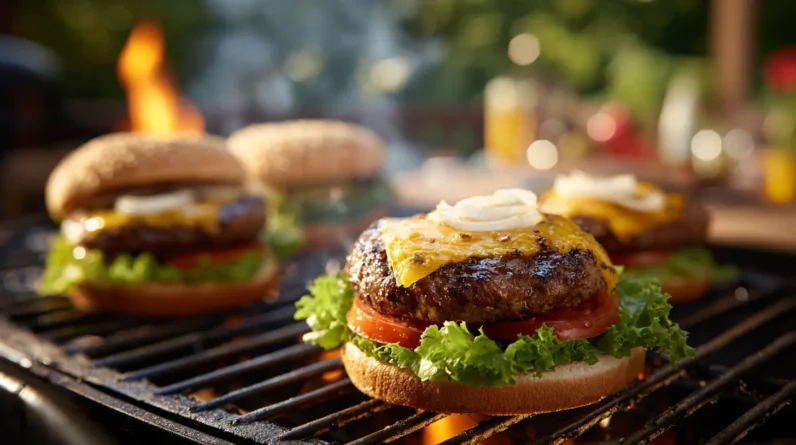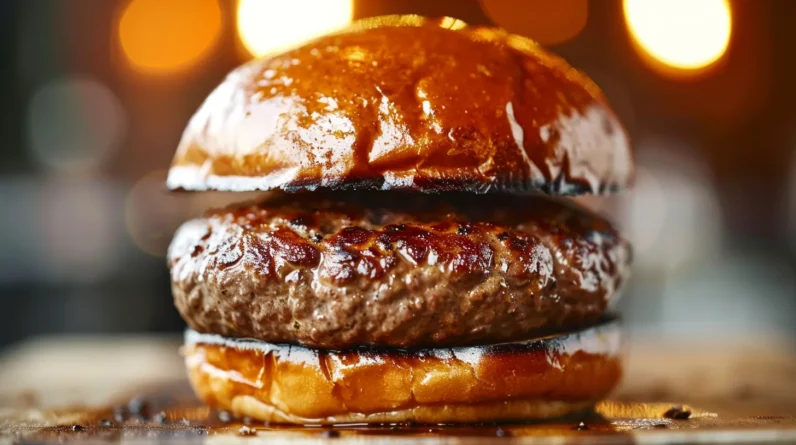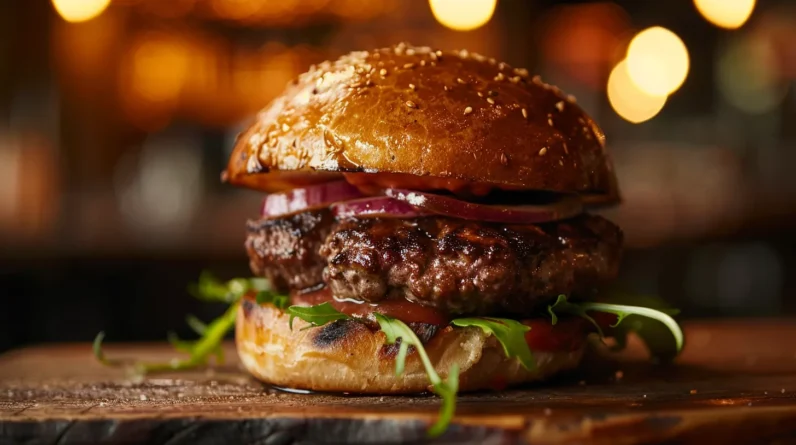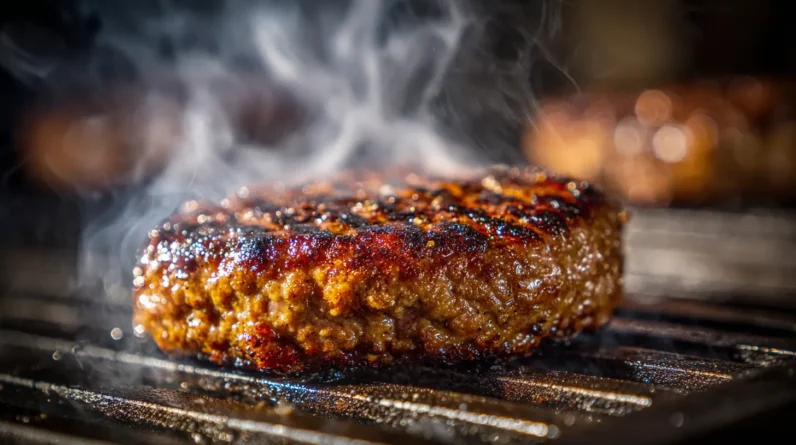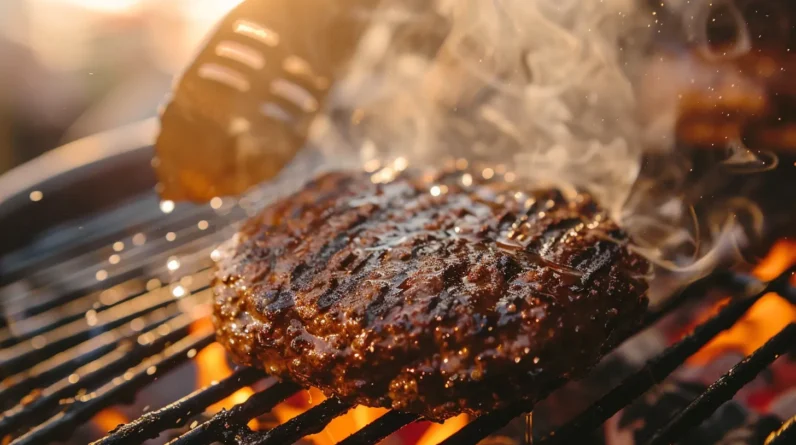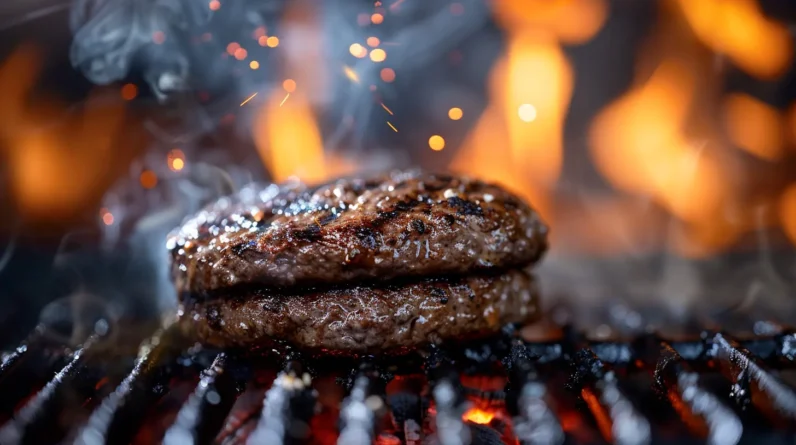
We’ve learned that premium meat means nothing if you can’t control heat—the critical variable that determines whether proteins coagulate gently or seize into hockey pucks. Temperature management governs moisture retention, crust development, and doneness more than any beef blend ever could. Most grillers fail because they treat their burners like an on-off switch rather than a precision instrument requiring two-zone setups, strategic flipping every 15-30 seconds, and thermometer verification at 130-145°F. Master these thermal techniques, and you’ll transform any patty into something exceptional.
How Temperature Control Transforms Your Burger’s Texture and Juiciness
When we master temperature control on the grill, we fundamentally alter how proteins within ground beef behave during cooking. Precise thermal management influences protein coagulation, optimizing firmness without developing toughness. By slowing temperature increases, we reduce thermal momentum that drives overcooking and juice expulsion. This approach narrows internal temperature gradients, ensuring uniform doneness from center to edge.
Achieving medium-rare to medium at 130-145°F balances tenderness with acceptable safety margins. We preserve moisture by minimizing rapid evaporation during initial cooking phases—starting indirect at 110-115°F before final searing. High heat activates the Maillard reaction for crust development, but excessive temperatures force fluid loss through over-coagulation. Managing carryover cooking prevents residual heat from pushing juicy patties past ideal doneness, maintaining that tender, flavorful mouthfeel we demand from exceptional burgers.
The Two-Stage Grilling Method: Mastering Indirect and Direct Heat
By dividing our grill into distinct heat zones, we gain surgical control over every phase of burger development. We’ll establish our direct zone with concentrated coals or active burners, reserving the opposite side for indirect heat. This configuration enables a methodical two-stage approach: sear first over high direct heat to develop the Maillard reaction, then migrate burgers to the indirect zone for interior cooking without exterior carbonization.
| Zone | Temperature | Purpose |
|---|---|---|
| Direct | 450-550°F | Initial sear, crust development |
| Indirect | 300-350°F | Even cooking, moisture retention |
| Shift | Variable | Finishing, temperature adjustment |
Proper grill maintenance guarantees consistent performance across both zones. We’ll position drip pans beneath the indirect side, managing flare-ups while stabilizing ambient temperature. This systematic approach transforms unpredictable grilling into repeatable precision.
Why Your Thermometer Is Your Most Important Grilling Tool
A meat thermometer stands as the definitive arbitrator between undercooked pathogens and overcooked disappointment. We can’t trust visual cues—USDA research confirms one in four brown burgers remain dangerously undercooked. This Thermometer Importance extends beyond safety: it’s precision engineering for flavor optimization.
Insert your probe into the burger’s thickest section, measuring at 160°F for ground beef. We’re targeting thermal kill zones for *E. coli* and Salmonella while preserving moisture integrity. Digital instant-read models deliver accuracy within seconds, eliminating the guesswork that ruins weeknight dinners and backyard gatherings alike.
Among Grilling Essentials, your thermometer ranks above expensive grates or premium charcoal. It transforms you from someone who cooks burgers into someone who controls microbial safety and Maillard reactions simultaneously. Temperature mastery separates competent grillers from exceptional ones.
Strategic Flipping: Using Heat Distribution to Your Advantage
The conventional wisdom of flipping burgers once—searing one side undisturbed for three minutes, then rotating for the final cook—undermines everything that is understood about heat transfer physics. Multiple flips accelerate internal temperature rise by up to 29% while preserving moisture through balanced heat distribution. We’re not encouraging constant harassment of your patties, but strategic flip timing creates uniform cooking that single-flip methods can’t achieve.
Key principles for optimizing heat distribution:
- Flip every 15-30 seconds during the first two minutes to establish even heat penetration
- Balance surface caramelization with interior doneness through controlled intervals
- Reduce moisture loss by limiting prolonged air exposure on any single side
- Prevent “black and blue” scenarios where exteriors char while centers remain raw
- Combine zone cooking with strategic flipping for maximum control
Adjusting Heat for Different Burger Types and Fat Contents
Fat percentage transforms everything about how heat interacts with your burger, demanding fundamentally different thermal strategies that most backyard grillers ignore. High-fat blends (80/20) require aggressive heat—350–400°F—to render fat rapidly and develop proper crust without greasiness. Lean proteins need gentler approaches to preserve moisture.
| Burger Type | Optimal Heat | Key Technique |
|---|---|---|
| 80/20 Beef | 375–400°F | High sear, render fat fast |
| 90/10 Lean Beef | 325–375°F | Moderate heat, minimize moisture loss |
| Turkey/Chicken | 325–350°F | Medium heat, prevent burning before 165°F |
| Grass-Fed/Bison | 300–350°F | Lower heat, leaner composition |
| Smash Burgers | 400°F+ | Maximum heat, rapid caramelization |
Fat content dictates cooking techniques: fatty burgers tolerate intensity, while lean meats demand precision and restraint.
Conclusion
We’ve walked through the thermal landscape of burger perfection, and here’s the reality: most backyard disasters stem from treating your grill like a binary switch rather than a precision instrument. Master heat zones, respect your thermometer’s readings, and understand that burger mortality—yes, we’re talking dry, lifeless patties—isn’t inevitable. Control temperature with surgical precision, and you’ll never serve another hockey puck. It’s science, not chance.


